#Location-Based Service Industry
Explore tagged Tumblr posts
Text

About Straits Research
#Location-Based Service Market#Location-Based Service Market Share#Location-Based Service Market Size#Location-Based Service Market Research#Location-Based Service Industry#What is Location-Based Service?
0 notes
Text
COMEMİXGO - MEGA+ (4)

Welcome to Comemixgo, the ultimate solution for businesses looking to enhance their online presence and connect with a broader audience. In today’s competitive digital landscape, having a reliable platform is essential to stand out and grow your brand. Comemixgo offers an innovative way to expand your reach with its extensive resources, including a comprehensive free company directory and an unlimited company directory option, tailored to meet your unique needs.
Free Company Directory
A free company directory serves as an invaluable resource for individuals and businesses looking for information about various companies without any associated costs. Such directories provide comprehensive listings that include essential details like company names, addresses, phone numbers, and industry classifications. When it comes to navigating vast amounts of company information, a free directory offers users an accessible way to locate the businesses they need swiftly.
Among the numerous platforms available, Comemixgo stands out by offering not only a free company directory but also an unlimited directory option. This flexibility allows users to browse through countless listings for various needs. A free company directory can be particularly beneficial for small businesses and startups, helping them to establish connections and discover potential partners or clients. Additionally, it empowers individuals looking to research companies for employment opportunities, investment prospects, or service providers.
Utilizing a free company directory is straightforward; users can often search by keywords, industries, or geographical locations. This functionality streamlines the process, making it easy to find just the right business. Furthermore, having access to an extensive company directory without the constraints of fees or subscription plans can greatly enhance networking opportunities and resource accessibility for everyone.
Unlimited Company Directory
The Unlimited Company Directory offered by Comemixgo is a comprehensive resource designed to empower businesses by providing unrestricted access to a diverse array of company listings. Unlike standard directories, this feature ensures that users can explore an extensive range of businesses without limitations.
With the Unlimited company directory, users can:
Access a broad spectrum of industries, making it easier to find competitors, suppliers, or potential partners.
Utilize advanced search functionalities that allow for filtering based on specific criteria such as location, company size, and industry.
Gain insights into various companies, including contact information, business descriptions, and service offerings.
Bookmark favorite listings for future reference, enabling quick access to key businesses that align with their goals.
This feature not only enhances user experience but also simplifies the process of networking and finding necessary contacts in the business landscape. By utilizing the Unlimited Company Directory, businesses can make informed decisions and foster valuable connections.
Overall, this tool serves as an invaluable asset for anyone looking to thrive in today's competitive market.
Comemixgo
Comemixgo stands out as an essential platform in today’s dynamic business environment, providing both a free company directory and an unlimited company directory. This dual offering ensures that businesses of all sizes can benefit from enhanced visibility and accessibility. Ideal for startups and established enterprises alike, Comemixgo simplifies the process of discovering and connecting with a diverse range of companies.
One of the key features of Comemixgo is its user-friendly interface, allowing users to swiftly navigate through the extensive listings. By leveraging advanced search functionalities, you can easily filter results based on various parameters, ensuring that you find the most relevant companies for your needs. Whether you are looking for potential partners, suppliers, or competitors, Comemixgo makes it easy to access a wealth of information at your fingertips.
Additionally, the platform promotes networking opportunities, encouraging collaborations and partnerships that can lead to mutual growth and success. With the option for businesses to list themselves, Comemixgo contributes to a thriving ecosystem where visibility translates to more opportunities.
This robust directory is not just about listings; it also emphasizes quality. By vetting and verifying company information, Comemixgo ensures that users can trust the data they access. This commitment to quality makes it a go-to resource for anyone seeking reliable company information in the ever-expanding marketplace.
For those looking to maximize their outreach or explore new avenues for growth, utilizing Comemixgo's resources can prove invaluable. With a focus on providing both a free company directory and an unlimited company directory, businesses can leverage the platform to enhance their visibility and tap into new markets!
588 notes
·
View notes
Text
"Discarded shells from restaurants and hotels are being used to restore damaged oyster ecosystems, promote biodiversity and lower pollution in the city’s bays...
Nestled in between the South China Sea and the Pearl River Delta, Hong Kong has been seen historically as an oyster hotspot. “They have been supporting our livelihood since ancient times,” says Anniqa Law Chung-kiu, a project manager at the Nature Conservancy (TNC) in Hong Kong. “Both oysters and their shells are treasures to humans.”
Over the past five decades, however, the city’s sprawling urban development, water pollution, as well as the over-harvesting and frequent seafloor dredging by the lime industry – which uses the crushed shells to make construction material – have destroyed Hong Kong’s oyster habitats and made the waters less hospitable for biodiversity.
The more oyster colonies falter, the worse the problem gets: oysters are filter feeders and purify water by gobbling up impurities. Just one Hong Kong oyster can filter up to 200 litres of water a day, more than any other known oyster species. But decades of rapid industrialisation have largely halted their water-purifying services.
The depletion of Hong Kong’s natural oyster reefs also affects the ability of local farmers to sustainably cultivate their oysters in a healthy environment, denting the reputation of the city’s 700-year oyster farming tradition, designated by Unesco as an “intangible cultural heritage”.
Inhabitants of the coast feel abandoned, says Ken Cheng Wai-kwan, the community leader of Ha Pak Nai on Hong Kong’s Deep Bay, facing the commercial city of Shenzhen in China. “This place is forgotten,” Cheng says. “Oysters have been rooted here for over 400 years. I ask the question: do we want to lose it, or not?”
A group of activists and scientists are taking up the challenge by collecting discarded oyster shells and recycling them to rebuild some of the reefs that have been destroyed and forgotten in the hope the oysters may make a comeback. They’ve selected locations around the island where data they’ve collected suggests ecosystems still have the potential to be rebooted, and there are still enough oyster larvae to recolonise and repopulate reefs. Ideally, this will have a positive effect on local biodiversity as a whole, and farming communities.
Farmers from Ha Pak Nai were among the first to hand over their discarded shells to the TNC team for recycling. Law’s team works with eight oyster farmers from Deep Bay to recycle up to 10 tonnes of shells every year [over 22,000 pounds]. They collect an average of 870kg every week [over 1,900 pounds] from 12 hotels, supermarkets, clubhouses and seafood restaurants in the city, including some of its most fashionable establishments. About 80 tonnes of shells [over 176,000 pounds] have been recycled since the project began in 2020.
Restaurants will soon be further incentivised to recycle the shells when Hong Kong introduces a new fee for waste removal – something that is routine in many countries, but only became law in Hong Kong in July and remains controversial...
Preliminary data shows some of the restored reefs have started to increase the levels of biodiversity, but more research is needed to determine to what extent they are contributing to the filtering of the water, says Law.
Scientists from the City University of Hong Kong are also looking to use oyster shells to increase biodiversity on the city’s concrete seawalls. They hope to provide tiny, wet shelter spots around the seawall in which organisms can find refuge during low tide.
“It’s a form of soft engineering, like a nature-based solution,” says Charlene Lai, a research assistant on the team."
-via The Guardian, December 22, 2023
#oyster#oyster farming#sea shells#seafood#hong kong#ecosystem restoration#biodiversity#ecosystem#water pollution#clean water#cultural heritage#marine life#marine animals#marine science#good news#hope
806 notes
·
View notes
Text
my thoughts on the whole Cameo Thing™
Putting my first tweet in a screenshot; the rest is copy-pasted. And for context, since the quoted tweet was (understandably) deleted, it said, "Yes $100 is a lot, and it feels a little classist as some of us won’t be able to afford it."

Cameos are not a public service. No one is hurt by not having the ability to spend $100 on a video. No one is being treated worse than others because they can't afford a personalized video. I don't understand how "classist" would even come to mind.
Even if that was the worst example, I'd still fully get J's reaction. He and G are professionals. They deserve to be paid fairly. Based on G's earlier rate, other ppl's cameo rates, con photo rates, and how unique J&G are... $100 is a great deal.
I expected the $100 price tag. If George charged $50 for one person... I mean, there's two of them now. 50 x 2 = 100. I'm shocked that more than a handful of folks were surprised.
A personal anecdote: I've just started taking art commissions this fall. I am finally confident enough to charge a rate that fairly compensates me. Honestly, I should probably charge more.
Things like art commissions, cameos, convention photos/signings all fall under the same umbrella. They are treats. They are luxuries. They are never going to be equally accessible to all. It's not just price; it's also time, expertise, location, etc.
What kind of message does it send artists, writers, actors, creatives, etc when we frame their reasonable* rates as selfish and wrong? * reasonable based on industry standard, not on individuals' wallets
Anyway. J radiated enthusiasm for another chance to engage with us. I expected his happy bubble to burst at some point—I was surprised by his level of fandom engagement tbh—but that doesn't make it any less fucking sad.
-
If you're upset or heartbroken or angry because Jayden is backing away: maybe think about why, and if you could change what you do to help protect yourself from suffering this kind of distress should something similar happen again.
#fandom bs#dead boy detectives#long post#the entitlement and unselfawareness some people have is truly gobsmacking
156 notes
·
View notes
Text
Connecting the World: Telecommunications Satellites Enhance Global Communication Networks

In an increasingly interconnected world, the role of telecommunications has never been more critical. The rapid growth of digital communication technologies has significantly transformed the way we live, work, and interact with one another. At the heart of this transformation lies a technology that orbits high above us – telecommunications satellites. These sophisticated machines play a pivotal role in bridging gaps across continents, bringing people closer, and enabling the seamless exchange of information on a global scale.
Telecommunications satellites are the backbone of modern communication networks. These satellites are designed to transmit signals across vast distances, overcoming the limitations of terrestrial infrastructure. By relaying signals from one point on the Earth's surface to another, they enable instant communication, regardless of geographical barriers. This capability has revolutionized various sectors, from media broadcasting to internet services, emergency communications, and more.
The Evolution of Telecommunications Satellites
The journey of telecommunications satellites began in the mid-20th century. Early experiments with satellite communication laid the groundwork for what would become a global network. The launch of the first artificial satellite, Sputnik, in 1957 marked the dawn of the space age. However, it wasn't until the launch of the first geostationary satellite in 1965 that the true potential of satellite communication was realized. This satellite, positioned in a fixed location relative to the Earth's surface, could provide continuous coverage to a specific region, paving the way for real-time communication across the globe.
Since then, telecommunications satellites have evolved dramatically. Advances in technology have led to the development of more sophisticated satellites with greater capacity, reliability, and efficiency. Modern satellites are equipped with high-powered transponders, enabling them to handle large volumes of data transmission. These advancements have expanded the capabilities of satellite communication, making it an indispensable part of the global communication network.
How Telecommunications Satellites Work
The operation of telecommunications satellites is based on the principles of radio frequency transmission. These satellites receive signals from ground-based stations, amplify them, and retransmit them back to other ground stations. The process involves several key components:
Uplink: The transmission of signals from a ground station to the satellite. This is typically done using high-frequency radio waves.
Transponder: The component within the satellite that receives the uplink signal, amplifies it, and changes its frequency for retransmission.
Downlink: The transmission of signals from the satellite back to a ground station. This completes the communication loop, allowing the original signal to reach its intended destination.
Satellites are positioned in different orbits depending on their specific functions. Geostationary satellites, which orbit at approximately 35,786 kilometers above the equator, provide continuous coverage to specific regions. Low Earth orbit (LEO) satellites, positioned much closer to the Earth's surface, offer lower latency and are often used for services requiring real-time data transmission, such as internet connectivity.
Impact on Global Communication Networks
The impact of telecommunications satellites on global communication networks is profound. They have enabled a level of connectivity that was previously unimaginable, facilitating the seamless exchange of information across vast distances. Here are some key areas where their impact is most evident:
Media and Broadcasting
Telecommunications satellites have revolutionized the media and broadcasting industry. They enable the transmission of television and radio signals to remote and underserved areas, ensuring that people worldwide have access to information and entertainment. Live broadcasts of major events, such as sports competitions and political speeches, are made possible through satellite technology, allowing audiences to experience these moments in real time.
Internet Connectivity
In many parts of the world, terrestrial internet infrastructure is either insufficient or nonexistent. Telecommunications satellites provide a vital solution to this problem by offering internet connectivity to remote and rural areas. Satellite internet services have become increasingly popular, providing reliable and high-speed internet access to communities that were previously disconnected.
Emergency Communications
During natural disasters and emergencies, terrestrial communication networks are often disrupted. Telecommunications satellites play a crucial role in providing emergency communication services, ensuring that rescue and relief operations can be coordinated effectively. Satellite phones and portable satellite communication devices are essential tools for first responders and humanitarian organizations, enabling them to maintain communication in even the most challenging conditions.
Global Navigation Systems
Telecommunications satellites are also integral to global navigation systems. They provide the precise timing and positioning data required for navigation and location-based services. These systems are essential for various applications, including aviation, maritime, and land transportation, as well as for personal navigation devices used by millions of people worldwide.
Future Trends and Developments
The field of telecommunications satellites is continually evolving, driven by advancements in technology and increasing demand for connectivity. Several trends and developments are shaping the future of this industry:
High Throughput Satellites (HTS)
High throughput satellites represent a significant advancement in satellite technology. These satellites offer substantially increased data transmission capacity, enabling faster and more reliable communication services. HTS technology is particularly beneficial for providing broadband internet access to remote and underserved areas, helping to bridge the digital divide.
Constellations of LEO Satellites
One of the most exciting developments in satellite communication is the deployment of constellations of low Earth orbit satellites. These constellations consist of hundreds or even thousands of small satellites working together to provide global coverage. LEO constellations offer lower latency and higher data transfer rates compared to traditional geostationary satellites, making them ideal for applications such as internet of things (IoT) connectivity and real-time data services.
Advances in Satellite Manufacturing
Advances in satellite manufacturing are making it possible to produce smaller, more cost-effective satellites. These miniaturized satellites, often referred to as smallsats or cubesats, can be launched in large numbers, providing flexible and scalable communication solutions. The reduced cost of manufacturing and launching these satellites is driving innovation and enabling new players to enter the market.
Integration with Terrestrial Networks
The integration of satellite communication with terrestrial networks is another key trend. Hybrid networks that combine satellite and terrestrial technologies can offer seamless connectivity, ensuring that users have access to reliable communication services regardless of their location. This integration is particularly important for providing consistent internet coverage in areas with challenging terrain or sparse infrastructure.
Challenges and Considerations
While telecommunications satellites offer numerous benefits, there are also challenges and considerations to address. One of the primary challenges is the cost associated with launching and maintaining satellites. The development, launch, and operation of satellites require significant investment, which can be a barrier for some organizations.
Additionally, the increasing number of satellites in orbit raises concerns about space debris and collision risks. Ensuring the long-term sustainability of space activities requires careful management of satellite operations and the implementation of measures to mitigate the risk of space debris.
Conclusion
Telecommunications satellites have fundamentally transformed global communication networks, enabling instant connectivity and information exchange across vast distances. From media broadcasting and internet connectivity to emergency communications and global navigation, the impact of these satellites is far-reaching and profound.
As technology continues to advance, the future of telecommunications satellites looks promising. High throughput satellites, LEO constellations, and advancements in satellite manufacturing are set to further enhance the capabilities of satellite communication. By overcoming challenges and embracing innovation, telecommunications satellites will continue to play a crucial role in connecting the world, bridging gaps, and enabling a more connected and informed global community.
In a world where connectivity is essential, telecommunications satellites stand as a testament to human ingenuity and the relentless pursuit of progress. They embody the spirit of exploration and innovation, bringing people closer together and fostering a sense of global unity. As we look to the future, the continued evolution of telecommunications satellites promises to unlock new possibilities and drive the next wave of communication advancements.
196 notes
·
View notes
Text
Shinobi602 comments on ResetEra:
"If Anthem was a runaway success, you'd be seeing a very different BioWare right now who'd be all in on the live service model. They're running uphill because they've got goodwill they need to earn back after the fact, but its failure (plus Fallen Order's success) is what allowed them to pivot right back to what they're good at: single player character driven RPGs. Silver lining but still." [source]
User: "I don't think its unreasonable to have hoped that a Dragon Age game would have similar gameplay to previous Dragon Age games." Shinobi: "Veilguard does have similar gameplay though, just not the exact same gameplay." [source]
"Open world doesn't automatically mean better. Inquisition's open world zones were basically Bioware's response to Skyrim and anticipating that's what players wanted. The big zones were cool but they were also bloated and full of uninteresting quests. Andromeda also took Mass Effect to huge open world zones and they had the same result. It was ass and the game benefited nothing from it. It's better for Bioware to stick to what they do best which is tighter, more structured play spaces." [source]
"they'll do what they think they're good at. Inquisition was highly rated, but the big open areas were also flawed. If they felt that's not what they'll excel at, that's fine. There ARE larger open areas in Veilguard though. If that's your very strict definition on what will make the game good apparently." [source]
"If you're sole definition of a Dragon Age game is that you can take direct control of companions and a tac-cam, it's understandable. But I think it's completely false that this is somehow unrecognizable as a Dragon Age game. There are tons of different aspects that define the series outside of that." [source]
"It's been evolving and changing for over a decade." [source]
"They did say there are some "killer cameos" they're keeping secret. My mind's going to several different possibilities..." [source]
User: "Yeah, they need to wrap up this story in this game. I'm already a little annoyed that we are getting another "the veil is torn and demons are wrecking havoc" story. They cannot stretch that to a third game." Shinobi: "It's a lot more than that. It's not a repeat of Inquisition or anything." [source]
"This might genuinely be the most in depth CC in a mainstream RPG that I've seen." [source]
"Yeah this is more like Inquisition, though you could still change out companion helmets in that one." [source]
"They did confirm tavern songs are back so that's good news, and The Swan (Minrathous tavern) has a bunch." [source]
"Yeah there's a good amount of veterans working on Veilguard. Though I always find that to be such a weird qualifier, and it seemingly always comes up with Bioware in particular. As if there aren't tons of talented non-Bioware devs from across the industry who could join the team and still write and design a great game. Like nah, it can't be a good game unless it's got people who've been there for 20 years! 😄" [source]
"There are also rune items you can equip that provide different effects and act as their own abilities basically, plus ultimate attacks for each class specialization (so 9 total), plus finisher moves and things like elemental combo detonations for extra damage." [source]
"there are definitely 'open areas' you can explore around in. It's not more linear than ME2." [source]
User: "Is my reading of "mission-based" it being like ME2/3 correct?" Shinobi: "Yeah, in that regard, it's more structured like Mass Effect, which I think is to its benefit. DAI just suffered way too much from open world bloat. I think the tighter, handcrafted structure works a lot better." [source]
User: "How big are the areas? Like the first game where you open the map and pick a location?" Shinobi: "Don't know exactly. But that's what I was told. There are several open ended areas that are explorable in the story. Plus a hub area." [source]
"I think if fans have been yearning for a quality Bioware game like they were used to before, this is that. Tight design, great character models, environments, animations have gone next level, combat fluidity, etc...it's all here. I compare it to the jump from ME1->ME2. [re: the jump in quality/fidelity/presentation.] This isn't a spoiler, as Game Informer said, it's a full on action RPG, and you can still pause and issue commands. But this is not DAO. Preferences put aside, Bioware's moved on from that ages ago. This isn't BG3 at all. But they've put a huge emphasis on making combat feel good to play. As in engaging the player, more real-time, more Mass Effect. It's a meaty, single player RPG with lots of systems going on inside. Also, like they said, this is the prologue, the beginning of the game. Keep that in mind if you don't see everyone's powers unlocked or intense pause and play. If you keep all that in mind, I think you'll really like this." [source]
"But it's a big jump for Bioware. [re: animations]" [source]
"[rogues are] flashy, jump around a lot, etc." [source]
"Party members can definitely get knocked out in battle" [source]
"It's important to note that what was shown was completely level 1 combat, and likely on easy mode for demo purposes. There is way more to it in more advanced battles. When it opens up with way more abilities, unique momentum attacks, ultimates, and other...things they haven't shared yet, on higher difficulties, it will look and feel way different." [source]
"It'll be rated M. It's got its share of nudity lol." [source]
User: "should we expect a comparable level of dialogue role playing as we had in Inquisition? I don't mind the changes to combat but there seemed to be more auto dialogue here than I remember from Inquisition or Tresspasser." Shinobi: "Yeah. That was just the intro. They just like to keep the pace going for a big start to the game." [source]
"This isn't accurate at all though, and it keeps getting perpetuated. Yes, there's been departures like Casey Hudson, Aaryn Flynn, Mike Laidlaw, etc, but I could easily list dozens of people at Bioware right now that have been there for 10-20+ years, some even longer. Do they just...not count for some reason? The entire core team building Mass Effect right now were OG leads on ME1-3, been there for over 20 years. And even outside of that, like, does this really matter? Do you know one of the game's premier VFX/lighting designers worked for ILM? Or one of the cinematic leads is an alum from Blizzard? Or one of the creature animators was a senior creature animator on Horizon Forbidden West? Talent is talent. And if we look at the industry through that lens too, sure, tons of studios are just "X, Y, Z studio in name", in many ways. There's no studio in the industry that holds on to their entire team for 30-40 years." [source]
"They do have that data. And I think even this thread would be shocked at how tiny of a % of players took direct control of other companions. Or went into tac-cam. Not just Inquisition but the whole series." [source]
#dragon age: the veilguard#dragon age: dreadwolf#dragon age 4#the dread wolf rises#da4#dragon age#bioware#video games#anthem#long post#longpost#mass effect#mass effect: andromeda#next mass effect
196 notes
·
View notes
Text
MCU Timeline: Captain America: The First Avenger
March 10, 1917 - James Buchanan Barnes is born.
August 15, 1917 - Howard Anthony Stark is born.

July 4, 1918 - Steven Grant Rogers is born.

April 9, 1919 - Margaret "Peggy" Carter is born.
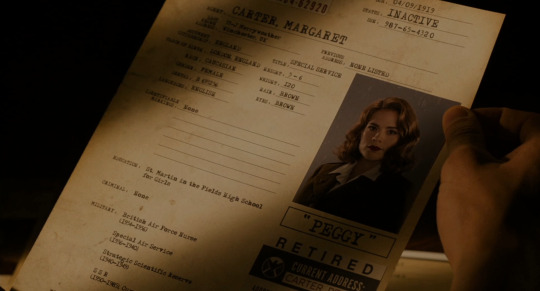
Why 1919 (deleted scene from The Avengers) and not 1921 (Agents of S.H.I.E.L.D.), as stated in Wikipedia: Agents of S.H.I.E.L.D. is not canon for the MCU (events of the show take place in another universe, where Peggy was born in a different year and had a different background).
1934-1936 - young Peggy serves as a nurse in the British Air Force.
1936-1940 - Peggy serves in the Special Air Service.
1940:
Peggy joins the Strategic Scientific Reserve.
Howard founds Stark Industries and becomes its CEO.
May 1941 - Steven Rogers attends a Dodgers vs The Phillies baseball game at Ebbets Field, Brooklyn.

March 1942 - Red Skull invades Norway and extracts the Tesseract.

1942/1943 - The Allies receive a gift from Wakanda: Vibranium. It is given to the SSR's Head Engineer - Howard Stark.
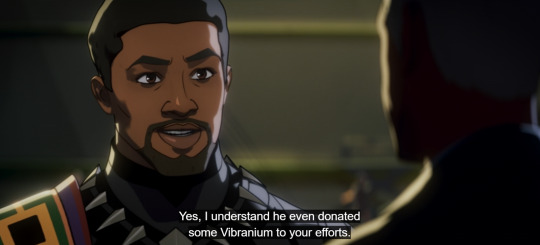
1943:

June 14:
13:50 - Steve gets his last 4F.

And his last beating in the alley a couple of hours later.
Evening - he and Bucky go to the "World Exposition of Tomorrow", where Howard demonstrates his (almost) flying car. Steve meets Dr. Erskine and gets a (falsified) 1A.
June 15:
Sergeant James Barnes heads to Europe with the 107th Infantry Regiment.
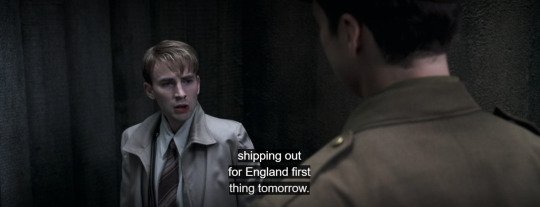
Candidate Rogers begins his trial week for Project Rebirth at Camp Lehigh in NJ.

June 21 - Dr. Erskine makes his choice and informs Rogers. They talk about it, about the serum and HYDRA.

June 22, morning - Steve becomes a super soldier. Erskine is killed. The last vial of serum is destroyed.
June 23:
Rogers is offered a position in the USO theater (to help sell war bonds) and receives a (fake) rank of captain.
Night - SSR (including Peggy and Howard) is being retasked to fight HYDRA and goes to London, UK.

July-October - Captain America's US tour (over 200 performances).
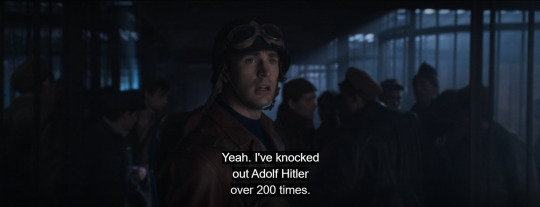
November 3rd:
Captain America show in Italy.

Night - Steve goes behind the lines to a HYDRA camp in Austria to rescue Bucky with the help of Peggy and Howard.
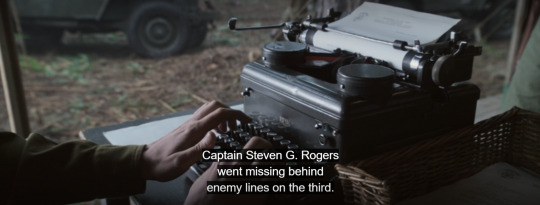
November 5th - he returns with 400 (CATFA) or 163 (CATWS) liberated soldiers.

A couple of days later - SSR in London. Based on the locations of HYDRA bases remembered by Rogers, they develop a plan to combat HYDRA. Steve puts together a team.
Marvel Studios' mistake: the medals and badges Steve wears don't make any sense at this particular moment. He simply had neither the time nor the opportunity to earn the Combat Infantry Badge, or the Presidential Unit Citation Badge, nor could he receive the American Defense Service Medal.

Next day, 8 am- Steve meets with Howard and receives his vibranium shield.
1944:
November 1943 - November 1944 - Howling Commandos destroy HYDRA weapons factories.

December 1944 - January 1945 - attack on the train with Dr. Zola. Bucky falls from the train from a great height and is declared killed in action. Zola is captured.

1945:
Soon after, early January - the Valkyrie is finished and ready to attack major US cities. SSR receives information about the location of HYDRA's main base in the Alps and heads there.
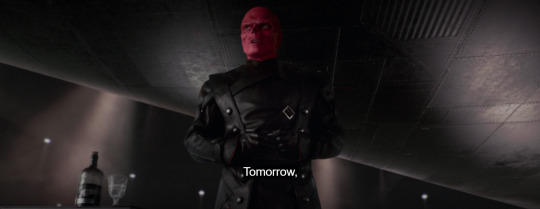

Next day - SSR attacks HYDRA's main base. Red Skull teleports to Vormir. The Tesseract is lost in the Arctic Ocean. Crash of the Valkyrie. Steve goes into suspended animation.
After January 1945 - Howard Stark leads expeditions to find Rogers. He finds the Tesseract, but not Captain.
March 23, 1945 - Case №17 is opened. James Barnes "joined" the HYDRA branch in the USSR.

May 8, 1945 - VE-Day.
Spring-Summer 1945 - Howard is involved in the Manhattan Project.
1946:
December 1945/January 1946 - Peggy is assigned to the SSR office in New York.
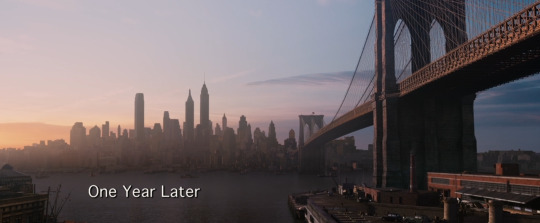
March 1946 - events of "Agent Carter" one-shot.

2012:
Early 2012 - 67 years later, Steve Rogers is found frozen but alive.
April 2012 - Rogers wakes up in the S.H.I.E.L.D. recovery room in New York City.
Iron Man (2008) Timeline
The Incredible Hulk (2008) Timeline
Iron Man 2 (2010) Timeline
Thor (2011) Timeline
The Avengers (2012) Timeline
#marvel#mcu#steve rogers#captain america#bucky barnes#james barnes#mcu timeline#captain america the first avenger#captain america the winter soldier#agent carter#peggy carter#howard stark
82 notes
·
View notes
Note
never before have i worked under a supervisor who got mad at me for trying to help with other tasks when i otherwise had nothing the fuck else to do. 👨🍳🌌
i’m doing temp work at a catering kitchen with a few other coworkers and my usual chef while our usual location under the same company is closed for reasons. it’s literally my third fucking day here. today they tagged me in to help with “hand-outs” for a buffet service—basically i just had to stand there and wait for a buffet runner to come back and ask for a salad. the salads were already on their shelf, ready to unwrap and pass out. i am straight up just standing there doing fuck all. my usual chef from the kitchen i’m typically at (i’ll call Chef) is helping oversee the buffet service as the on-duty chef, there’s another guy actually managing it and touching base with the organizers running the event (i’ll call Guy), and then there’s this hot line supervisor (i’ll call Bibi) and the two other temps helping her.
Bibi goes off to do god-knows-what, and again, i’m literally just standing there doing fuck all, so i step over to help Chef and the other temps arrange shit for the hot plates on buffet—garnishing pans, etc. we get their shit dressed, put it back in the hot holding boxes, ready to hand out to the runners. i’m keeping general track of where everything is because…i don’t know, i’m fucking paying attention and make sure i can snap into action at a moment’s notice if called to do so? mostly i’m just transferring pans back and forth for dressing and finding the odd places things have been stowed so it’s not that hard for me to follow when i’m the one being told to put shit back. Chef and Guy walk off to do something, i think to do with the organizers or the buffet attendants, making sure we have all our garnishes to match spec, etc.
Bibi comes back losing her mind because apparently there’s *another* event that got their hot entrees mixed up with ours? so i, trying to be helpful, pipe up to mention which hotbox the just-dressed pans were put into, because like. we don’t fucking want those being taken. and instead of something simple like “i’ve got this handled, thank you” and going back to her shit, she drops everything she’s fucking doing and starts giving me this, like, straight up almost two minute condescending LECTURE. talking to me like i’m fresh out of kindergarten and never stepped foot in a kitchen before instead of a fucking 30-year-old man who’s been in this industry for the better part of a decade, about how *she* can handle *her* hot side and *i* can handle *my* cold side and a bunch of circular bullshit reiterating on that point and by her tone and body language, not so subtly disparaging my intelligence as she did so. straight up i would have felt more highly respected if she just called me a slur to my face.
i’m staring at her like she’s sprouted a second head, but again, it’s my third day here and she has seniority, so i bite my tongue. like, what the fuck? you’ve got a guy here who’s willing to step up and do something other than stand there with one thumb up my ass and the other on my phone to fight the urge to take a nap for the goddamn hour and a half until we even open service. and you’re going to stand there and lecture me for it? like i’m a child?? with your whole chest??? you are 40 years old and acting like this. wow. i appreciate the refusal to adhere to “time to lean, time to clean” mentalities but jesus fucking christ. it’s like she was perfectly genetically engineered to irritate me specifically and decided to speedrun pissing me off.
anyway, Bibi fucks off with the hotbox holding the vast majority of our backups for the beef entree. (we would later run out and have to call her to fucking bring some back because all we had otherwise was chicken and salads.) brief interlude with the return of Guy and him touching base with the temps. we’re standing around on our phones and chatting bc there’s nothing to do; he asks where the other hotbox went, and i actually AM allowed to explain that Bibi came and took it for the other buffet, but we’ve got X number in this other one, because Guy is actually halfway understanding of how operating a fucking kitchen as a team works, i guess. they check and confirm. rinse and repeat with Chef, also a halfway reasonable person to work with. again, they walk off to do whatever.
Bibi returns. she’s looking for a garnish. i start to point it out. this time she just cuts me off to dive into *another* lecture. i’m fed up at this point so i just interject “i’m communicating where i put it because i’m the one who was told to put it away” and this time it turns into an almost three minute lecture about the same bullshit of her handling her shit and me handling mine. i am physically struggling to keep my cool at this point and biting my tongue to keep from getting into an argument with her. i have to step back and put the speed rack with my salads on it between the two of us so i don’t have to fucking look at her.
Bibi walks away as Chef comes back. he’s worked with me a year he knows the Look i get when someone’s crossed a line with me and it’s taking everything in me not to metaphorically spontaneously polymorph into a silverback gorilla. and he comes back over to the buffet arrangement.
Chef: “So, what do you think of Bibi?”
Me, making unblinking eye contact: 🫠 (the longest, slowest, deepest inhale i have ever taken in his presence)
Chef: “Yeah, that’s why she doesn’t work for me anymore.”
turns out he has repeatedly had to get HR involved because of her behavior/attitude, resulting in her getting in the hot seat almost every time they have to work together when she just needs to learn when to stop fucking talking to people like that, and Guy agreed that she’s constantly out of line damn near every fucking time they’ve had to work with her, and they’re one of the location’s powerhouse workers. the fact that she still has a job there at all is so far fucking beyond me.
again, it was my THIRD DAY at this location, my first time working buffet service there, my first time working with her, and i barely got through a full sentence trying to be helpful and expedite things before she decides to take it upon herself to waste her own time by trying to break years of “doing more than your job description instead of simply doing nothing when you have no active tasks” conditioning in the most condescending way i could have possibly conceived of.
i’m so fucking insulted i’m seriously considering telling Chef not to volunteer me for any more temp shifts over there until i’m not at risk of having to work with her, because if she doesn’t learn to talk to me like i’m a fellow fucking human being, i will end up losing my temper, and i will certainly be asked not to come back regardless. i’ll just have less choice in the matter.
i might have to figure something out for seasonal work anyway while things are getting squared back away at my usual site, but i’d rather take my chances with a second job than risk having to deal with this fucking bullshit, and i don’t think i’ve made the best first impression at this other site anyway.
Posted by admin Rodney
46 notes
·
View notes
Text
Let's Talk: Worldbuilding Small Towns & Cities
this is a request from instagram!
Research!
pick a couple of real-life small towns or non-major cities and look into them!
how, when, and why did they form? some towns or cities form around bodies of water, are created for a specific industry (such as mining or lumber), or grow in close proximity to more major cities. what is the population makeup and density? how do people make a living there?
Essentials!
there are a couple of things that your town or city will need in order to function:
housing, shop(s) for food/clothing, some kind of food source such as a farm or garden, some kind of nearby water source such as a well or river, and a place for medical supplies or treatment.
depending on how modern the setting or how small the settlement, some of these may be located outside of your town/city.
Time Period!
more modern settings may have additional locations: laundromats, auto repair shops, restaurants and cafes, libraries, hardware stores, city halls, post offices, emergency services, waste management services, etc.
a lot of it depends on how big and how current your town or city is. less essential spots may be cut or merged based on these factors. for instance, a very small town might have furniture, groceries, convenience, and a pharmacy all in one building or “store.”
Naming!
for small town/city names, keep it simple! a lot of these places are named after relevant people/cultures, geography, or descriptors; think “Littletown,” “Fairhill,” “Fresh Springs,” or “Jefferson.” some small towns or cities are named after larger towns or cities, like any one of the half dozen places called “Ithaca” in the U.S.
if you’ve built or are using another language, the same naming conventions usually apply.
Questions!
what era is this setting in? agricultural, pre-industrial, industrial, post-industrial, etc? what level of technological advancement does this setting have?
what does trade look like there? what do they import and export? how close are they to major trade routes?
what major cultures, political affiliations, and religions influence this setting? how and when did these influences come about?
what is the geographical location? island, mountain, plains, etc?
what is stopping this location from growing into a major town or city?
Stealing!
when in doubt, steal like an artist!
find an existing (or historical) small city or cities that fit the rough vibe you’re going for and swap out necessary details.
if you use multiple inspiration sources, try and keep it consistent! most things are the way they are for a reason. take climate, geography, and general location into account!
-----------------
that's all! happy writing :)
buy me a ko-fi || what's radio apocalypse?
#🌿 writing#writing advice#writing tips#writing resources#worldbuilding#fantasy worldbuilding#fantasy writing#writerblr#writeblr
84 notes
·
View notes
Text
🚏 Foxfire Connections
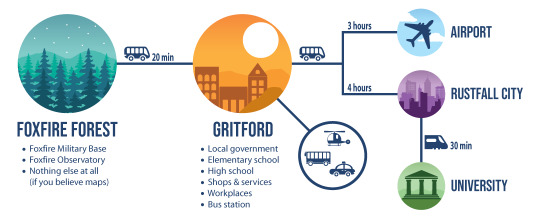
I don't have any map drawing skills whatsoever, so here's a little infographic to show just how isolated Foxfire is!
The crater where Foxfire is located is a restricted area and the town itself isn't marked on maps, but the military base and the observatory are. Officially, the only bus connection is meant for those. In practice, it's a lifeline for Foxfire locals.
Gritford is only a modest desert town too, living from the quarry industry. But it's the main settlement around these parts and the administrative center for the local government, so it provides most services and workplaces that Foxfire lacks.
Additional transport methods include school buses, taxis (you'll need to pay for the whole back-and-forth trip), and helicopters (if you have enough money, there are a few in Gritford). Private cars are banned in Foxfire Forest but the military has vehicles and even a couple airplanes.
#foxfire forest#foxfire forest extra#it'd be nice to have gritford as downtown#but for several reasons it'll never happen#so now it at least exists in this infographic ha#people who live in gritford know that foxfire exists#even tho most of them don't have a good idea how it's really like#only that seems many supernaturals live there#but it's somehow related to the military so better not think too much into it
68 notes
·
View notes
Note
Recent Chicago peice reminded me of the way Chicago north suburbs use military bases to divide and segregate in a manner that similarly matches connects to colonial actions. You always compile interesting stuff thank you.
Thank you for the kindness and support. I'm gonna riff on this a little bit. I'm sorry, I don't mean to distract from what you specifically brought up here.
Yea, we can add federal military base sites to the list of significant "innovations" Chicago has made in race-based labor segregation in service of wealth extraction. (For anyone following along, the article/essay we're discussing explores racism and white anxiety in Chicago, the fear and "anticipation" of Black migration from the South during Reconstruction and the Great Migration, and how between 1880-ish and 1910-ish Chicago then became a center of surveillance and policing beliefs and practices in response to this racial anxiety, refined to such an extent that Chicago's police/surveillance practices were then "exported" and employed across the US and also in the colonial plantations of the Philippines under US military occupation. By Jolen Martinez, in 2024, "Plantation Anticipation: Apprehension in Chicago from Reconstruction America to the Plantocratic Philippines".)
So Chicago is a wealth funnel, right? The node. The center of transportation networks. Extracted wealth channeled by the Great Lakes/St. Lawrence River waterway, channeled by the Mississippi River corridor, channeled by the railroads acting as tendrils reaching out into westward into "the frontier". For the United States, Chicago was the gateway to "the West". Over the course of the past two centuries: Furs from trapped mammals in Canadian boreal forest shipped through the lakes to French benefactors, mined metals from the Iron Ranges shipped through the ports, timber from Minnesota shipped through the waterway, cattle from Texas rangeland shipped to massive Chicago meat processing facilities, corn products from the tallgrass prairie ecoregion shipped to Chicago. And people, too. People diminished. People seen as mere resources. People as labor. People shipped to Chicago to work the processing centers, the docks, the restauraunt dish-pits. And so Chicago becomes a hub of the Great Railroad Strike of 1877. And because Chicago was a hub of labor unions and Black migration, it also becomes a hub of policing.
Chicago achieves the pinnacle of its spectacular reputation with its image as a glistening modernist metropolis after the construction of the railroad networks. But even before the city itself was formally established, the wetlands where the Chicago River meets Lake Michigan were kinda located in this general region that acts as a sort of bridge for French wealth, being both near the inland terminus of the Great Lakes-St. Lawrence route while simultaneously also sitting near a sort of terminus of the Mississippi River route (uniting French Canadian fur trade and Ontario/Quebec settlement with French "Caribbean" plantations and settlement via New Orleans).
I think about how suburbanization, and its attendant racial segregation, is especially blatant in something I kinda think of as "the southern Great Lakes industrial corridor and its economically, ecologically, culturally similar satellites" (Cleveland, Columbus, Detroit, Grand Rapids, Indianapolis, Milwaukee, Minneapolis, St. Louis, Omaha, etc.). Some writing that I enjoy about this, which you might enjoy checking out if you haven't yet, is Phil Neel's work, particularly the book Hinterland (2018). Neel's book is largely about suburbs/suburbanization; the environmental construction of Midwestern cities as hubs of industrial extraction and racial segregation; and how these Chicago-esque traditions of designing physical space (whether it's residential, "rural", "urban", whatever) to best isolate/subdue people for extraction are now widespread and typical of US space in general. As another example, Neel discusses how the "revitalized urban core" of Seattle's utopian "infotech metropolis" of tech companies is actually dependent on the corridor extending southward towards and past Tacoma, "this logistics empire" of "warehouses, food processing facilities, container trucks, rail yards, and industrial parks" while "the poor have been priced out" and "can also be found staffing the airport and the rail yards [...], loading boxes in warehouses [...]." So that the power of such a major city does not end at the technical city limit boundary, but extends beyond into the "rural" hinterland. (You can see this when looking up an "urban megaregion map".) This is of course pretty obvious with the Great Lakes cities, if you consider all of the corn fields, the farms, the Rust Belt manufacturing sites, many of which use railroad and/or highway corridors to funnel that wealth ultimately to a place like Chicago. And Chicago, in many ways, was a sort of "pioneer" of these techniques of organizing space with racially-segregated labor compartmentalization.
So perhaps unsurprisingly, urban/neighborhood segregation is very ingrained/formalized in the Great Lakes cities. Chicago's Lake Michigan-based sibling Milwaukee is especially notorious (2018 research found Milwaukee had the most extreme Black-white segregation of any US city with a million or more people). Including banking, home-loan denial, insurance practices engineered specifically and efficiently to isolate/segregate/prey upon Black people (all kinds of academic research on on these practices). Redlining ("other side of the tracks"), especially 1930s-1940s, made use of the region's many railroad tracks as physical barriers and hostile environments.
And part of why I liked Martinez's take on it was that we can see more evidence that Chicago's techniques of organizing space/life did not just establish ways of being in the Midwest, but also established ways of being across the United States. And we can kinda see that this power is not just physical/material.
I think Chicago is interesting, especially in the time period of the research we're talking about (1880-1910), because this Gilded Age, Edwardian era, turn-of-the-century-opulence kinda moment is sort of singularly important for (European) empire-building. British imperial power being exercised in Southeast and South Asia. The Scramble for Africa. French Algeria. European power reaching outwards. But it also corresponds to United States empire-building both domestically and globally. 1889/1890: Wounded Knee and "the closing of the frontier", the West has been won, from sea to shining sea, now the US thinks it owns the continent or whatever. And the US didn't waste any time. Immediately, the US moves on to Cuba, to the Philippines, etc. And it's like, at first, to target Indigenous people and the Wild West, there are obvious physical/material reasons why Chicago (geographically, as a railroad and telegraph hub, as shipping hub, as the destination of Great Migration) is like a homebase or an epicenter for westward expansion and domestic empire-building. And with Martinez's writing, we can see Chicago is not geographically a convenient hub of colonization abroad in Central America or the Philippines (it's not close to those locations, the railroads of Chicago don't reach Manila, etc.). And yet in a very scary way Chicago still actually did function as a hub of empire-building across the globe due to Chicago's ideas, imaginaries, beliefs. Chicago's imagination itself. Chicago's racism, channeling the earlier racial hierarchy of the antebellum South, reached out across the planet. Chicago authority figures trained police and administrators from elsewhere. Chicago-style police data-collection and record-keeping inspired surveillance approaches across the United States. The ideologies, the "personality types", the filing cabinets, the "intelligence cards", were adopted elsewhere. What white Southerners believed and practiced in antebellum Louisiana, would carry over into Gilded Age Chicago, would influence twentieth century US domestic surveillance, and would then affect the rest of the planet. The beliefs, practices, the very emotions of white US residents could transform plantations in the Philippines. Disturbing.
34 notes
·
View notes
Text

#Location-Based Service Market#Location-Based Service Market Share#Location-Based Service Market Size#Location-Based Service Market Research#Location-Based Service Industry#What is Location-Based Service?
0 notes
Text

by Michael McWhertor and Nicole Carpenter Workers at Sega of America voted Tuesday to ratify their first collectively-bargained contract with the U.S. arm of the video game company, granting new protections and raises for about 150 full-time and temporary employees. Workers in the union, known as Allied Employees Guild Improving Sega (AEGIS), won important concessions from Sega of America as part of the contract, including base-building raises for all employees, layoff protections, and a commitment to crediting people on games they’ve worked on, including early QA testers. It also affords employees in the union other protections, including letting workers pursue creative work in addition to their work at Sega and a guaranteed continuation of hybrid work. Workers will also receive just cause protections, joining Tender Claws workers in being the only ones in the North American video game industry to have them, organizers said. In the state of California, where Sega of America’s offices are located, workers are employed at will — meaning employers can terminate employees for almost any reason, provided that reason is not unlawful. These protections mean employers must follow a series of strict guidelines before getting rid of a worker, whether through firing or other means. Organizers for the union say contact negotiations between AEGIS-CWA and Sega of America spanned six months. [...] Workers at the games studio and publisher announced their intent to unionize in April 2023. The union partnered with the Communications Workers of America and voted to officially form a union the following July. AEGIS-CWA now represents employees across multiple departments at Sega of America’s headquarters in Burbank and its Irvine campus. Union employees work in a variety of roles, including brand marketing, localization, marketing services, product development, sales, and quality assurance.
48 notes
·
View notes
Text

The Catalyst: Life working in retail and the moment I finally said "fuck it, I'm doing porn."
I've been working in Customer Service off and on since early 2005, only ever being unemployed for short periods of time between job searches. I've worked in various retail establishments, with shipping companies, call centres, door-to-door sales, and even in kitchens & cafes. The only industry I have ever refused to work in has been fast food, and I'm sure those of you who have worked a drive through or two in your lives can understand my reasoning. I began in my first year of high school working at a Dollar Store that was next to an extremely seedy strip club (it eventually burned down and it was discovered that the owner had done it to try and cash in on the insurance). From customers verbally and physically abusing me, to an elderly man jerking his cock in front of me, my first romp in retail was merely a taste of what was to come for the next 20 years.
Some jobs were certainly better than others. I worked at a bookstore and a Halloween shop, both of which would have been fine if not for the politics of the company bleeding into the staff and making us all miserable. Bad management teams, abusive coworkers, bullying and drama akin to that which we experience in High School - it becomes exhausting after awhile. For minimum wage, which doesn't even come close to a living wage, it's just not worth the headaches. I rarely lasted longer than two years with any of my employers. When you're handed a penny raise after working your ass off for an entire year you tend to lose faith in the company that you've been breaking your back (and sanity) for. I promise, there was no lack of trying on my part to escape the clutches of the customer service industry. I have my BA in English, I have a certificate in photography, and I have some training in IT Web design (which proved to be far too much for my little brain to handle) and Audio Engineering. Unfortunately the job market for all of these industries in my part of the world is pretty much non existent. I'm pretty sure a BA in English is worth less than toilet paper even after the great pandemic shortage of 2020. Unfortunately, to make money in this world you gotta do what you gotta do. So to pay off my crippling debt and be able to afford an occasional package of ramen noodles so I don't starve to death, I have to continue working these soul crushing, mindless jobs.
It was in 2016 when I started working in donation rooms at thrift stores and, I will be completely honest with you - I fucking love it. Granted, it has it's downsides. I've sorted through more than a couple bags with mould, human feces, needles, and used sex toys, but the satisfaction of the treasure hunt it's absolutely worth the nasty shit that you sometimes encounter. But once again, the politics of the industry got in the way of finding my work enjoyable and rewarding. Nasty upper management was the downfall of all three thrift locations I've worked at. The first store the CEO shut us down without warning (I also later learned he was a sexual predator and was being sued by some of his employees for harassment, so that was gross). The second location had a violent customer base (we were robbed repeatedly), a bully assistant manager who would scream in your face when HE made a mistake, and a regional manager who loved to throw her staff under the bus.
So that leads us to my third romp in thrift, my absolute favourite job I've ever had, and the devastation brought upon me when everything came crumbling down.
My husband and I came into a little bit of money in 2021 and I decided to take a break from the world of customer service bullshit and return to school (This was my IT and Audio Engineering training). That summer I got a student job at a thrift store where 100% of the proceeds go into helping rescue animals. It was entirely volunteer based other than the management team and the summer students (who were there on a government grant). I had such an enjoyable experience working there as the volunteer coordinator than I returned the following summer, and they were so impressed with me they ended up hiring me on permanently part time to help with their rapidly growing business. At this point, due to some mental health struggles, I am not currently able to work full time hours, and they were more than happy to work around my disability...
Until the new regional manager was hired.
The store closed for renovations and I was brought in to help rebuild and re-brand the store.
Sure. No problem. It's more hours than I'm available for, but I don't mind just for a couple of weeks. It's also more physical work than my body is really equipped for but, just this once, I'll suffer through with a smile on my face.
Then I'm handed a key and I'm told "You're a staff supervisor now". Oh... okay? No one talked to me or asked me if I wanted the promotion, it's more hours than I can handle, and I don't really want the responsibilities that come with a supervisor position because of my disability, but since my old position has been dissolved I guess I'll have to suck it up. At least it comes with a raise, right?
Nope. Still minimum wage. Which is currently sitting about $15 under a livable wage. Also, we won't be training you and just expect you to know how to do the assistant manager's job.
Okay... Gotta do what you gotta do I guess.
You also have to work more shifts than you're available for.
Oh... yeah, okay. That could start to prove difficult as I'm dealing with a depressive episode right now but... sure?
Then suddenly I'm responsible for everything that goes wrong. A volunteer makes a mistake? Blame Billie - even on days she isn't working. The cash or pricing machines break? Billie. Shoes, purses, dresses, and coats priced to low? Blame Billie and make sure she's the only person who prices these things from now on. Need 30 things done at once right this second, tell Billie and don't let her delegate the tasks to anyone else. If she does, yell at her! Have Billie open and close the store for the next two weekends, but don't train her how to do it and expect her not to make any mistakes. Customer has an issue? That's right, it's also somehow Billie's fault! Even when she's at home sleeping!
Blame, blame, blame, blame, blame, blame, blame.
Yeah. This was the breaking point for me.
In July of 2023 I had started up an OnlyFans account to bring in a couple extra dollars. I'll discuss why this was a challenging decision for me in a future post, but originally I was just planning to post some tasteful nudes to earn myself a little spending money. By May of 2024, as all this bullshit had begun happening at work, that mindset had officially gone from a couple tasteful nudes to "Fuck it, I'm quitting retail and making porn." By August I had amassed enough of a following to put in my notice.
I am finished with retail as of October 15th, 2024 and turning to creating adult content full time.
Honestly, this is a terrifying leap of faith as I know content creation can be a fickle beast. Some months will be more lucrative than others, while an inability to keep people invested could have everything all come crashing down on top of me.
But I'm done with working for people who take advantage of me and pay me pennies. I know my value and I'm worth more than what I'm being given. I'm not a number who is easily replaceable, I am a strong capable woman who is in charge of her own destiny.
So fuck you workforce,
I quit!
Now. If you'll excuse me, I'm off to live life how it's meant to be lived,
Enjoyed!























#lifestyle#blog#retail#customer service#fuck it#I am a strong independent woman who don't need no retail horseshit!
20 notes
·
View notes
Text
Re: A Word on the Prototyping Process for Rotdolls. Internal Communication.
I hope this message finds you well.
It has come to my attention that there is a bit of confusion among staff regarding the development, prototyping, and testing processes for the SPIRAL (Synthetic Priority-Intensive Reborn Automata Limbsprite) series Rotdoll. This will be a brief overview regarding the questions I found prevalent or important to note.
To start, the transitional candidate must be in a state considered “too far gone,” "incurable" or “irreparable.” This is the number one criteria used when our manufacturers’ scouting contractors are procuring viable product. In fact, we tend to advise them on using those exact keywords. These candidates are rotting, barely functional, and while we cannot “fix” them, we can give them a chance. Once a promising candidate is located, we make contact and gain approval. Then the rebirth can begin.
The sedated Limbsprite is brought in, and we begin taking our protocolar measurements. Stretch out the legs, measure from heel to back of knee. From back of knee to buttocks. Around the widest section of the thigh. Around the knee. Around the widest section of the calf. Around the ankle. Repeat the same pattern on the other limbs; There should be no skipping of the second leg, as these naturally occurring bodies have imperfections and mismatched measurements that must be accounted for in the upgrading/rebirthing process.
Once the measurement phase is complete, our manufacturing drones are utilized in crafting what we call the Reciprocity Vessel Shell, or more commonly the RV-Shell, for the lucky Limbsprites who make it this far. They should consider themselves to have won the lottery! Their Shell will keep them going, as well as allow them to act out fulfilling lives in service to those they are in the possession of. But I’m getting ahead of myself. Next is the programming phase.
Once the Shell has been installed on the fleshwire of the Limbsprite’s exterior, and the necessary processing, function and suppression components (which come with our proprietary firmware pre-loaded) have been implanted into the subject’s brain and body, we can begin the programming process. This stage is the most time intensive, as there has to be a determination made based on the individual unit regarding what services it can or should be put forth to perform.
Maybe this Rotdoll is more suited for deployment in war, or perhaps this one is only to be used for janitorial service. This one is bound for corporate chauffeuring, and this one will be the worlds most efficient espionage and infiltration tool. To draw from a real example, take prototypal batch F; Most, if not all, Rotdolls belonging to batch F were in some capacity suited for direct combat. This, however, is atypical. Most batches are far more diversified in their application potential; Batch H, for instance, contained no two Rotdolls consigned to the same Service. This variance in Rotdoll implementation is something our company (rightfully!) touts above our competitors; It takes a massive amount of expertise to be able to direct such dissimilar units on their individual utilities. Yes, due to this, we have investors hesitant to buy in, given that the demand ebbs and flows depending on the stock we have at any given time, but the investors we do have remain passionate about the work we do here, and know to trust our process, as they have seen the broadly-applicable results.
To continue the process, we reinforce what the Executives have come to call the “Exertive Will.” This is the drive that our SPIRALs (and all Rotdolls broadly) experience that pushes them towards the goal we assign to them. With Rotdolls being more prone to hardware exhaustion, processing fatigue, Wirepain, and the industry-dreaded Techrot than the average automata on the market, we strive to imprint the Exertive Will on our units very early and very concertedly, to ensure that the units we distribute are not doomed to early failure and unmarketability.
I won't get into the weeds on the details of Exertive Will. That is jargon for our engineers to untangle. The purpose of this email is just to clear up some of the disconcertment that seemed to be spreading around among some of our newer employment bracket.
I hope that this was informative, and if you have any further inquiries, please bring them to your floor manager, and they will explain what their (and your) clearance allows.
From the office of
[NAME MISSING]
Gossamer Branch Manager of [LOCATION MISSING]
** This is classified internal communication meant only for the addressees copied on the original electronic mail. Sharing this message or the information therein is a breach of company non-disclosure clauses as well as local law. If you have received this message in error, please respond to this message with your email address and delete correspondence completely.
21 notes
·
View notes
Text
Yakuza OC registry
The idea is to reblog this post and list your OC with just enough basic info so that others can easily name drop or reference them as an easter egg! feel free to also link any other more substantial informational posts you have; for this thread let's keep it nice and quick! I'll go first
Name: Kadokura Kenshi
Likely locations: Sapporo, Tokyo, Osaka
Active period(s): 1970s+. Depends on AU. hes alive or dead whenever he needs to be
Role: powerful CEO of Sapporo-based arms company Rachi Heavy Industries. Has ties with yakuza, but more or less a reputable businessman.
Likely first/quick impression: smiling, sharply dressed businessman.
More detailed impression: very strong jawline, short wavy black hair, gregarious and friendly—in a way acts more American than Japanese. Expressive hands.
Likely scenarios: being polite to service workers/giving good tips, schmoozing with powerful people, speaking foreign languages, getting very intoxicated at clubs or parties, (rarely) serial killing a homeless person or someone else 'no one will miss.'
Canon relationships: friends with Sagawa and Andre Richardson. Close professional relationship with Kitakata Daizo. Ties with Jingweon before the massacre. Knows all the yakuza brass in both Tojo Clan and Omi Alliance. Koga Matsuhisa started out as an intern with Rachi Heavy Industries and they're friends now.
What can you do : no holds barred. kill him brutally if you want. i will laugh heartily.
#yakuza oc#yakuza#ryu ga gotoku#rgg#kadokura kenshi#why am i putting this in the main game tags am i insane#we just need a yakuza OC network idk#you can find lots more about kadokura if you search his name in my blog i guess#memecomradeoriginal#im supposed to be working rn but my book is drying
85 notes
·
View notes